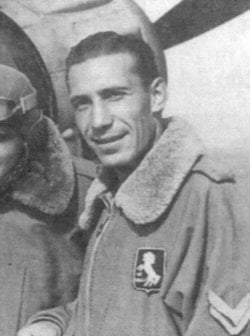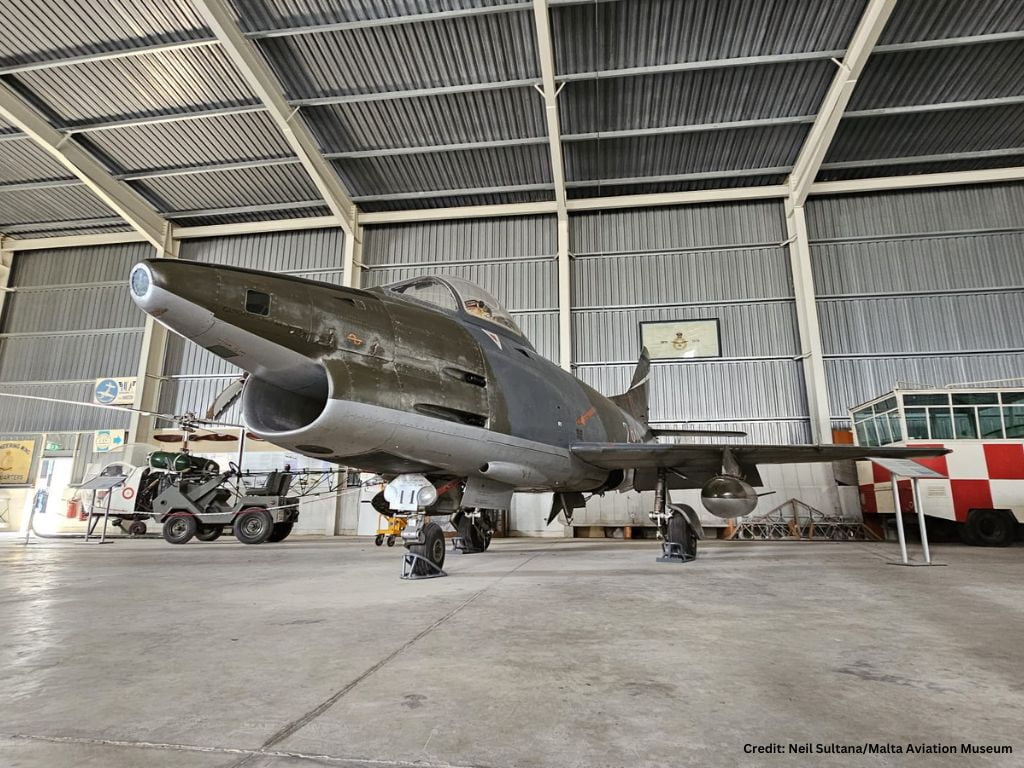Adrian Warburton was a British reconnaissance pilot during World War II, whose remarkable military career involved numerous missions and acts of bravery. His legacy lives on as a testament to his unwavering commitment to duty and his invaluable contributions to the war effort.
by Frederick Galea
At the beginning of September 1940, three new Marylands were flown to Malta, from Thorney Island in Hampshire, making the flight direct over France and Sardinia. The three aircraft reached Luqa on the 6 September: AR705 – AR707 – and AR712 with Plt Off J.H.T. Foxton, Plt Off A. Warburton and Sgt R.V. Gridley
The first Maryland sortie was flown by Foxton (in AR712 with Warburton and Gridley) off Tripoli on 14 September, the crew sighting and photographing a cruiser and three destroyers.
Shortly after both Sgts Bibby and Plt Off Foxton went down with diarrhoea – known as the Malta Dog. As the demands were pressing and accordingly training had to be cut to the very minimum, navigator Warburton was almost forced, within days, to fly out as pilot. Thus on 25 September, AR712, in the hands of Warburton was to carry out a recce of Corfu, which had to be abandoned – as the hydraulics failed because the Maryland’s undercarriage simply could not take Warburton’s savage zig-zags and one wheel had been torn off on take-off, requiring an emergency return. These were the first flying experiences of Adrian Warburton.

On the morning 2 November, Plt Off Warburton, with Spires and Moren, carried out a recce over Taranto and Brindisi in AR707; the aircraft being intercepted by a seaplane and three biplanes of 2°Gruppo CT, but escaped after Moren reported that he had fired some 200 rounds at short range, hit one fighter, possibly damaging the engine. The seaplane was, however, shot down and when still afloat Warburton continued to attack it until it was destroyed.
Meanwhile, a bullet had entered the nose of the Maryland smashing through the instrument panel and hitting Warburton, penetrating his harness, which took some of the force out of the bullet, and then entered his chest. Fortunately it was almost spent by the time it struck him and the wound was little more than skin deep. Warburton retained control of the aircraft, which had sustained many hits, and was on fire with one engine hit.
On the morning of 11 November, AR705 with Warburton at the controls (with Sgts Spires and Moren) flew to Taranto harbour in southern Italy at 12:25, where the Italian fleet was lying at anchor. Warburton took the Italian defences by surprise, as below him the ships that were the flower of Mussolini’s navy looked strangely unprotected. Twice the Maryland flew round the harbour, her cameras clicking while Spires scribbled the ships’ names with his pencil. Then the Taranto anti-aircraft batteries awoke. Clear of the flak, the Maryland sped back to Luqa with her precious information, arriving back with a souvenir – an aerial from an enemy ship caught in the tail wheel. Photographs revealed the presence in Taranto harbour of five battleships, 14 cruisers and 27 destroyers.
On the night of 11/12 November, at 20:30, twelve Swordfish, with long-range fuel tanks, took off from Illustrious and set course towards Taranto, 170 miles to the north-west. The formation, although scattered while flying through cloud, reached their target around 23:00. Six Swordfish attacked with torpedoes while the others attacked the ships, fuel tanks, and seaplane base with bombs. One torpedo sunk Conte di Cavour and two more damaged Littorio. The bombers set the oil-storage depot on fire, and damaged the seaplane base. An hour later, the second wave arrived and added further hits to Littorio and to a third ship, Caio Duilio.
Announcing the news to an excited House of Commons, Mr Winston Churchill spoke of “this glorious episode.” It was a victory when a victory was very much needed, for the autumn of 1940 was one of the blackest periods of the war. And from Admiral Cunningham to Air Commodore F H M Maynard, Air Officer Commanding Malta, went a letter of thanks “for the most valuable reconnaissance work… without which the successful attack on Taranto would have been impossible.”

Early in the New Year on February 11, exactly three months after Taranto, the London Gazette announced the award of a Distinguished Flying Cross to Flying Officer Adrian Warburton “for devotion to duty.” Warburton had won his first decoration.
A Bar to Warburton’s DFC was gazetted at the end of August, while at the end of September he and his crew flew to Egypt for a rest from operations, credited with five aircraft shot down and two damaged in the air and three destroyed on the ground. He returned in January 1942 as a Flight Lieutenant, bringing over a photo-reconnaissance Beaufighter in which he became effectively the AOC’s personal reconnaissance pilot.
His second tour ended in mid-March, and he was awarded a DSO, as he returned to Egypt. He was back in August, now a Squadron Leader, to command 69 Squadron, which was now operating two flights, one of Baltimores and one of Spitfires.
On 14 October 1942, during a shipping strike, a Beaufighter was shot down. He found and circled round an Italian MTB, Medici, leading it to the crew in their dinghy, despite being fired on by the vessel and attacked by six MC202s, all of which he evaded. He was awarded a second Bar to his DFC for this.
On 8 February 1943, the Spitfire Flight of 69 Squadron formed the nucleus of a new 683 Squadron, and he led this unit until October. On 10 July, during the invasion of Sicily, he undertook a sortie over the beachhead in one of 1435 Squadron’s Spitfires, and when six Bf109s attacked, he was able to claim one of these shot down. Late in the year he was given command of 336 PR Wing in Tunisia, but damaged his back in a motor accident. On recovery, he returned to the UK where he was attached to the US 7th PR Group as Liaison Officer.
One April evening there was a reunion in the officers’ mess at RAF Benson in Oxfordshire. Warburton was there. So was Colonel Elliott Roosevelt, son of the US President. He and Warburton were old friends. Roosevelt had commanded an Anglo-American reconnaissance wing in the Mediterranean to which Warburton had been attached as his advisor – John Spires was in the Benson party too, said Spires: “I hadn’t seen ‘Warby’ for some time. Now he was a Wing Commander with a chest full of medal-ribbons, but still the same old ‘Warby’.”
Keen still to fly, Warburton took off on 12 April 1944 in one of the unit’s F-5B Lightnings (No. 42-67325) on a sortie over Southern Germany intending to photograph German airfields on the way, with Sardinia as his refuelling destination thereafter. “I’ll see you” he told John Spires as he walked to the plane. But he never reached San Severo. An American pilot flying in another plane parted company with him soon after they reached the Alps. Warburton flew on alone. He was never seen again!
After the end of the war, Adrian Warburton was still posted as ‘missing, presumed dead’. In 2002, almost 60 years later, the mystery of his disappearance has been solved. Human remains and the wreckage of a USAAF P-38 F-5B Lightning were found in a field at Egling-an-der-Paar, a small town ten miles north-east of Landsberg-am-Lech in Bavaria. These were taken to a US military base where the Americans concluded after tests that they were Warburton’s. He was laid to rest on Wednesday, 14th May 2003, in Durnbach Commonwealth War Graves Cemetery, north of Lake Tegernsee, in southern Germany, the Service being conducted with full military honours.

It results that at around 11:45 hours on 12 April 1944, Warburton’s Lightning came in low over the Luftwaffe airfield at Lechfeld and light flak guns at the base opened fire. Shortly after, his aircraft rapidly lost height and crashed into a field killing the twenty-six-year-old pilot. Almost immediately the Germans cordoned off the crash site. Parts of the pilot’s remains were recovered but not identified. As the aircraft was American, the pilot’s nationality was believed to be the same.





One Response
I was born I January 1943 into the Warburton and I was named Adrian